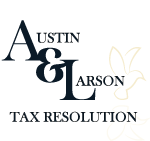When you’re facing overwhelming tax debt, the Offer in Compromise program seems like a lifeline, a chance to settle with the IRS for far less than you owe. Tax relief companies capitalize on this desperation, promising easy approvals and massive savings. While OIC approval is challenging, our experienced team can properly evaluate whether you’re among the candidates who could benefit from this program. During our consultation, we’ll honestly assess all your options, including OIC if you truly qualify – to find the best solution for your specific situation
The good news is that failing to qualify for Offer in Compromise doesn’t mean you’re out of options. In fact, many alternative solutions work better for most taxpayers. Payment plans give you up to six years to pay without the complex qualification process. Penalty abatement can significantly reduce your balance by removing fees and related interest. Partial payment agreements let you pay what you can afford until the collection period expires. This guide helps you understand whether Offer in Compromise makes sense for your situation and, more importantly, reveals the alternatives that could provide the tax relief you actually need.

Understanding Common Misconceptions About Offer in Compromise
Offer in Compromise programs face many false beliefs among taxpayers today. This confusion often comes from dishonest companies that twist facts to gain clients. These businesses spread misleading information to make their services seem more valuable. Many taxpayers believe things that simply are not true about these programs. Austin & Larson Tax Resolution helps clients understand the reality behind these programs.
The IRS takes a very detailed approach when reviewing settlement applications. People often wait many months just to receive an answer from them. The agency works hard to check if you can actually pay before deciding. They will reject your application if they think you have payment ability. This thorough process protects the government from losing tax revenue unfairly.
Here are the most common false beliefs that trap many taxpayers:
- False Belief: Tax settlement is a hidden program for paying very little. The reality shows that tax settlement programs are publicly available to everyone. The IRS does not hide these options from taxpayers who need them. You do not get special treatment just for knowing about the program. It helps qualifying people settle their debts through legitimate government channels. However, the requirements to qualify remain very strict for most applicants. The U.S. Treasury Department oversees these programs to ensure fairness.
- False Belief: Approved settlements mean no future tax obligations or monitoring. The truth requires you to follow all tax rules for five years afterward. You must file every required return on time during this period. All tax payments must arrive by their due dates without exception. Breaking these rules allows the IRS to cancel your approved settlement completely. Tax compliance services can help ensure you meet these ongoing requirements.
- False Belief: Applying for settlement automatically triggers a tax audit. Settlement applications do involve detailed financial review by IRS staff members. This process can feel similar to an audit examination in many ways. However, applying does not automatically start an audit against your tax returns. It also does not increase your chances of getting audited later. If you do face an audit, having proper tax audit representation makes a significant difference.
- False Belief: Any money problems qualify you for debt settlement programs. Even serious financial stress may not meet the program requirements today. The IRS will not approve settlements just because full payment seems difficult. They expect you to make lifestyle changes before considering settlement options. You must try every reasonable payment method before they will help. The National Association of Enrolled Agents provides guidance on qualification criteria.
How to Avoid Wasting Time and Money on Failed Applications
You must take this entire process very seriously and avoid rushing through important decisions. People often think the worst outcome is simply getting rejected by the IRS. However, rejection means losing your $205 application fee and any down payments you made. The IRS keeps these payments even when they reject your settlement request completely. Tax assistance for individuals includes help evaluating your chances before applying.
Your payments do reduce your total tax debt, but you might pay more than planned. This happens when your offer gets rejected and you lose the money anyway. A thorough financial analysis prevents these costly mistakes from happening to you in the first place. Working with a local tax attorney can help ensure accurate calculations.
You need to get your IRS transcript showing exactly what you owe in total. Look closely at your assets and calculate the real equity value in each one. Review which living expenses the IRS actually allows and calculate your disposable income accurately. Research whether other payment options might work better for your specific situation instead. The U.S. Tax Court maintains records that can help verify debt amounts.
This analysis takes time, and waiting can feel frustrating when you want relief immediately. However, spending time on analysis now saves much more time and money later. You avoid wasting hundreds or thousands of dollars on applications that will fail. Finding out you do not qualify before applying lets you focus on better solutions.
How to Check If You Can Get Offer in Compromise
The IRS provides tools to check your approval chances, but you can also calculate the numbers yourself before starting the complex months-long application process. Understanding these calculations helps you make better decisions about your tax situation and saves valuable time. Start by adding up all your monthly living expenses that the IRS allows, then subtract this total from your monthly income to find your leftover money each month. Multiply this remaining amount by 12 for lump sum payments or by 24 for installment plans, then add your asset values using full amounts for cash and 80% for property values. Tax preparation services can help ensure accurate calculations.
Consider this example: if you have $400 remaining monthly after bills and $20,000 in home equity, your lump sum calculation would be $400 times 12 months plus $20,000 equity, totaling $24,800 in payment ability according to IRS standards. If you owe $22,000 in taxes, they’ll likely reject your settlement offer since you can theoretically pay the full amount. However, owing $65,000 means you could potentially reduce your debt by more than half through settlement. The American Institute of CPAs recommends professional review of these calculations.
Asset values significantly impact your results. Someone with $450 monthly surplus and a paid-off home worth $250,000 would calculate $450 times 24 months plus $200,000 in home equity (80% of market value), totaling $210,800 in payment ability. Even with $140,000 in back taxes and penalties, the IRS would probably reject this settlement offer because the calculated payment ability exceeds the debt owed. For those dealing with both federal and Michigan state tax issues, calculations become even more complex.

Three Main Ways to Qualify for Offer in Compromise
You can pursue an offer in compromise through several different pathways available today. Understanding which option fits your situation helps before starting the application process. Each path has specific requirements that you must meet for approval. Choosing the wrong category can lead to automatic rejection of your request.
When the Government Cannot Collect Full Payment
This represents the most common reason people apply for debt settlement programs. It happens when your income and assets fall far below your total debt. The IRS realizes they cannot recover the complete amount you owe them. Your financial situation makes full collection nearly impossible for the agency. This option works best for people with very limited resources and income. The Social Security Administration documentation can support claims of limited income.
When You Question the Amount You Actually Owe
This path applies when the tax debt amount itself remains unclear or disputed. You can challenge whether you really owe money to the government at all. This option does not work if courts have already decided your case. You need strong proof that the debt calculation contains serious errors or mistakes. The IRS will demand extensive documentation showing why you believe the amount is wrong. Business tax assistance often includes help with disputed assessments.
When Full Payment Would Create Serious Financial Problems
This less common option helps people who could technically pay but would suffer greatly. You might have enough assets to cover the debt on paper only. However, using those assets would create major hardship for your family situation. The IRS may accept a lower amount because full collection seems unfair. This category requires proving that payment would cause exceptional difficulties beyond normal financial stress. The Consumer Financial Protection Bureau provides guidelines on financial hardship.
Consider someone who owns a home with significant value built up over time. Refinancing that house would make monthly payments too expensive to afford realistically. Selling the property would leave them unable to find housing in their area. Or imagine a parent facing large tax bills while caring for special needs children. They might appear able to pay through installment plans on paper alone. However, their medical expenses far exceed what most families spend on healthcare. In situations like these, the IRS may approve settlement because full collection would cause unfair hardship. Currently not collectible status might be a better option in these cases.

Why Self Filed Applications Get Rejected More Often
Most offer in compromise applications face rejection, but self filed cases fail even more frequently. Several specific problems cause these higher rejection rates among people who apply alone. Understanding these common mistakes helps you avoid wasting time and money on failed applications. Professional help often prevents these costly errors from happening in the first place.
Missing Information on Required Forms
Settlement applications require multiple detailed forms that must be completed perfectly for approval consideration. Form 433-A alone contains eight full pages of financial questions that need accurate answers. Leaving any section blank or providing unclear responses typically results in immediate rejection. The IRS demands complete information before they will even review your financial situation properly. The Michigan Department of Treasury has similar requirements for state programs.
Wrong Financial Information Provided to the IRS
Your financial disclosure forms the most important part of your entire settlement application process. You must list every asset you own and calculate their exact equity values correctly. Hiding assets, undervaluing property, or misrepresenting your payment ability guarantees rejection of your request. The IRS has sophisticated methods for verifying all the financial information you provide to them. Self-employed tax assistance helps independent contractors properly document income.
Not Understanding What the IRS Expects You to Pay
The IRS uses complex calculations to determine how much each taxpayer can reasonably afford. They consider your income, approved living costs, asset values, debts, and future earning potential. Many people wrongly estimate their expenses too high or their income too low. This leads them to believe they qualify when they actually do not meet requirements. For example, the IRS only allows specific living expenses regardless of your actual spending habits. Private school tuition might prevent you from paying taxes, but the IRS considers it optional. They will not reduce your payment ability because of unnecessary expenses like this. The Financial Industry Regulatory Authority offers tools for calculating reasonable expenses.
Failing to Include All Required Supporting Documents
Settlement applications demand extensive documentation to prove every financial claim you make to the IRS. You need recent pay stubs from every job, statements from all retirement accounts, and bank records. The required list also includes three months of statements from each bank account you own. Lender statements for all debts must be included with your application as well. Missing any required document usually leads to automatic rejection of your entire request. When facing IRS tax levies and wage garnishments, proper documentation becomes even more critical.
People commonly get denied because they do not realize how much their assets hurt them. Someone with large tax debt but substantial retirement savings will face rejection quickly. The IRS expects them to use retirement funds before accepting any settlement offer. The same rule applies to taxpayers with significant home equity or fully paid mortgages.

Other Options When Offer in Compromise Does Not Work
Maybe you calculated your chances and discovered that approval seems very unlikely for you. Perhaps you want to explore different solutions before starting the difficult application process required. Several other payment options exist that might work better for your specific financial situation. These alternatives often provide real relief without the strict requirements of settlement programs. A tax lawyer in Ann Arbor can help evaluate all available options.
Payment Plans That Spread Costs Over Time
Payment plans represent one of the simplest options available to taxpayers who need help today. The IRS requires less documentation because you agree to pay your full debt amount. This makes the approval process much faster and easier than settlement applications require. Many people can apply online and receive an instant decision about their payment plan request.
You can spread your payments over periods lasting up to 72 months in most cases. Some situations allow even longer payment periods depending on your debt amount and circumstances. The fees for payment plans cost much less than settlement application fees as well. This option works well for people who can afford monthly payments but need more time. The Small Business Administration offers guidance for businesses needing payment arrangements.
Partial Payment Plans That Reduce Your Total Debt
Partial payment plans work similarly to settlement programs in some important ways for taxpayers. This option also bases approval on your actual ability to make payments each month. You make monthly payments until a specific expiration date set by law arrives. However, these payments will not cover your entire debt before the deadline passes completely.
The remaining balance gets written off automatically when the collection period ends for you. You must provide detailed financial records just like settlement applications require from applicants. The IRS can demand full payment if your financial situation improves before the deadline arrives.
Temporary Relief When You Cannot Pay Anything
This relief option only helps taxpayers who would face extreme hardship from any payments. Currently not collectible status stops all collection activities against you immediately and completely. However, interest and penalties continue growing on your debt during this time period. The IRS can remove this status if your financial situation gets better later.
Removing Penalties That Increase Your Total Debt
Penalty removal could provide significant relief when penalties make up large portions of debt. For example, failure to pay and failure to file penalties each add 25% extra. These penalties also accumulate interest charges that increase your total debt even more. Penalty removal eliminates those penalties and all related interest charges from your final bill. In extreme cases, bankruptcy and IRS tax debt forgiveness may provide another avenue for relief.
Conclusion
Tax debt settlement might seem like the perfect solution, but the harsh reality is that most taxpayers simply don’t qualify for these incredibly strict programs. With only 40% of applications receiving approval and countless others failing the initial qualification test, the odds work against you from the start. Before wasting valuable time and money on applications destined to fail, take control by calculating your actual payment ability using the IRS formula. Many discover they have sufficient assets or income to disqualify them completely. Payment plans, partial payment arrangements, currently not collectible status, and penalty removal often provide much better results without the complex documentation requirements and lengthy waiting periods that settlement offers demand.
Take decisive action today by requesting your complete IRS transcript, conducting an honest review of your entire financial situation, and selecting the relief option that truly matches your circumstances. Whether you ultimately pursue settlement or choose alternative solutions, addressing your tax debt situation promptly prevents additional penalties and compounding interest from making an already difficult situation significantly worse for your family’s financial future.
FAQs
How long does the IRS take to review an offer in compromise application?
The IRS typically takes several months to review and respond to settlement applications completely. This lengthy process includes detailed verification of all your financial information and supporting documents.
Can I apply for an offer in compromise if I have significant home equity?
Having substantial home equity usually disqualifies you from settlement programs entirely. The IRS expects you to use available equity before considering any settlement offers.
What happens to my application fee if the IRS rejects my settlement offer?
The IRS keeps your $205 application fee even when they reject your settlement request. Any down payments you made also apply toward your debt but aren’t refunded.
Are there better alternatives to offer in compromise for most taxpayers?
Payment plans often work better since they require less documentation and faster approval. Partial payment plans and penalty removal can also provide significant relief without settlement requirements.


Recent Comments